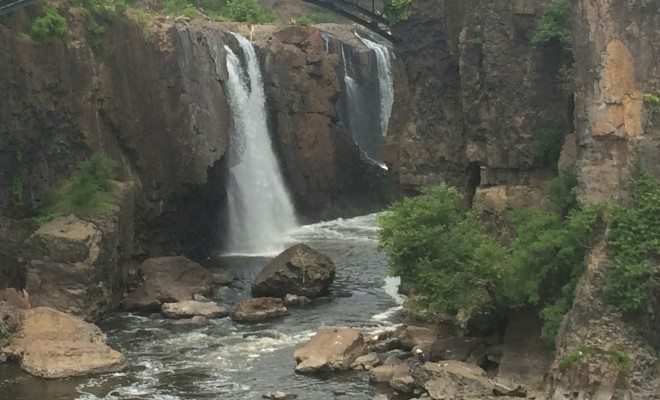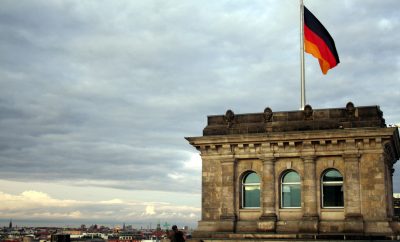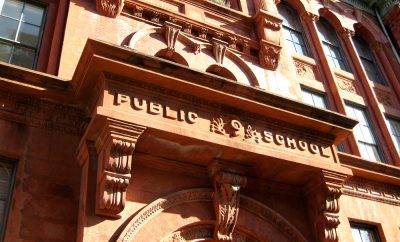
Blogs
A National Park That’s a National Disgrace
Deep within the heart of the notoriously dangerous and underdeveloped city of Paterson, New Jersey, lies a scenic waterfall of historical and environmental significance.
In 1778, Alexander Hamilton picnicked in the vicinity and was impressed with the power of the Passaic River and its Great Falls. The brilliant and foresighted founding father envisaged water as a source of power for the industries of the new and developing nation. Hamilton’s work, including founding an organization called the Society for Establishing Useful Manufactures, did in fact result in the river and waterfall providing power for the region, including the newly founded city of Paterson, which it continues to do to this day.

Alexander Hamilton: Paterson’s founder and the Great Fall’s promoter. Courtesy of Franklin R. Halprin
The Paterson Great Falls area is supervised by the National Park Service and the US Department of the Interior. Many people have not heard of this all, much less the fact that it is a national park. Granted, one might not visualize this place alongside Niagara Falls, the Grand Canyon, or Old Faithful; however, this is not a consequence of its inferiority or failure to provide for its visitors a transcendental experience in nature. Rather, the National Park Service, and We, the People, have forgotten about it and let it languish.
One can be easily misled by the high quality literature received upon arrival. An NPS map delineates the site along with trails and overlooks. Another references an audio guided walking tour around the park and other local points of interest. None of these things is a particularly viable option for the curious tourist or visiting family. The trails have fallen into a state of disrepair, or are completely closed for renovations, the completion dates of which are vague. The limited angles by which one can view the falls do not effectively convey their beauty. Furthermore, in order to get there one must wade through an accumulation of trash on the grassy area. At one point, I picked up and threw out a deflated balloon. This was particularly frustrating because of the dangers these items pose to local animals; a hedgehog scampered by shortly thereafter.
On the day I attended, there happened to be a decent number of people present because a small lecture was scheduled. It had recently been the anniversary of the infamous duel between Alexander Hamilton and Aaron Burr, and so some people came out to hear the historic tale. Otherwise, I am told by some associates who had explored the park on an average day, the place tends to be relatively vacant. The brochure map indicated a visitor center across the street; I figured it would be productive to look into it and acquire more information. All I found, though, was an empty parking lot and building with no signs or indicators. Was this it? There was no evidence in any of the literature, nor at this building itself, that the center was under renovation or closed. Upon further research at home, I discerned that this empty building was in fact the Great Falls Historic District Cultural Center and its overhaul should be completed later this summer.
It is a disgrace in its own right that this historically and environmentally significant location has fallen into such a state of disrepair, under-appreciation, and under-attendance, but there are economic and social factors at play here as well. While there are many complex reasons why the city of Paterson is in such poor condition, the Great Falls provide an untapped opportunity to inject some life into the local sector. Fostering tourism via the Falls could provide a source of income to the Paterson economy. While there are many other issues that must be addressed in order to truly lift the city out of its current situation, the Falls are an easy starting point. This would also provide incentive to refurbish the locale and other points of interest, creating a self reinforcing system. As it stands, the streetwise tourist is not likely to wander around the streets of Paterson listening to an audio tour; improving the park experience and improving the local quality of life go hand in hand.
Paterson is a prime example of the social and economic ramifications of deindustrialization. There is a plethora of abandoned buildings and vacant streets, which are breeding grounds for violence, gang activity, and drug use. Aside from the fact that many people do not know of the Falls, finding one’s way there and back is relatively stressful. Once arrived, one is deterred from truly experiencing everything the site could and should offer. Rather, one is distracted by the abysmal infrastructural and human conditions that abound. These are all things that surely reduce the number of annual visitors. If many people wanted to come, the city would find more motivation to improve; if the city found more motivation to improve, many more people might want to come. However, the city of Paterson is not wholly responsible or to blame, as the Falls are a national park and the initial spark must be provided by the federal government.
We must understand that the quality of our environments and the quality of our lives are intertwined. Nature is not something that only exists “out there,” but is right in our backyards. It is all around around us and is a part of us as much as we are a part of it. This nation has a culturally motivated value system that has to do with preservation of natural spaces. The Paterson Great Falls is a gem that needs polishing. It is a beautiful site that we ought to appreciate and for which we should be grateful. Revamping this gift of nature would not be just for its own aesthetic sake. A quality national park site would have a direct effect on the local conditions and continued potential for growth and improvement in the city and region.
—
Franklin R. Halprin (@FHalprin) holds an MA in History & Environmental Politics from Rutgers University where he studied human-environmental relationships and settlement patterns in the nineteenth century Southwest. His research focuses on the influences of social and cultural factors on the development of environmental policy. Contact Franklin at staff@LawStreetMedia.com.
Featured image courtesy of [Franklin R. Halprin]











Comments